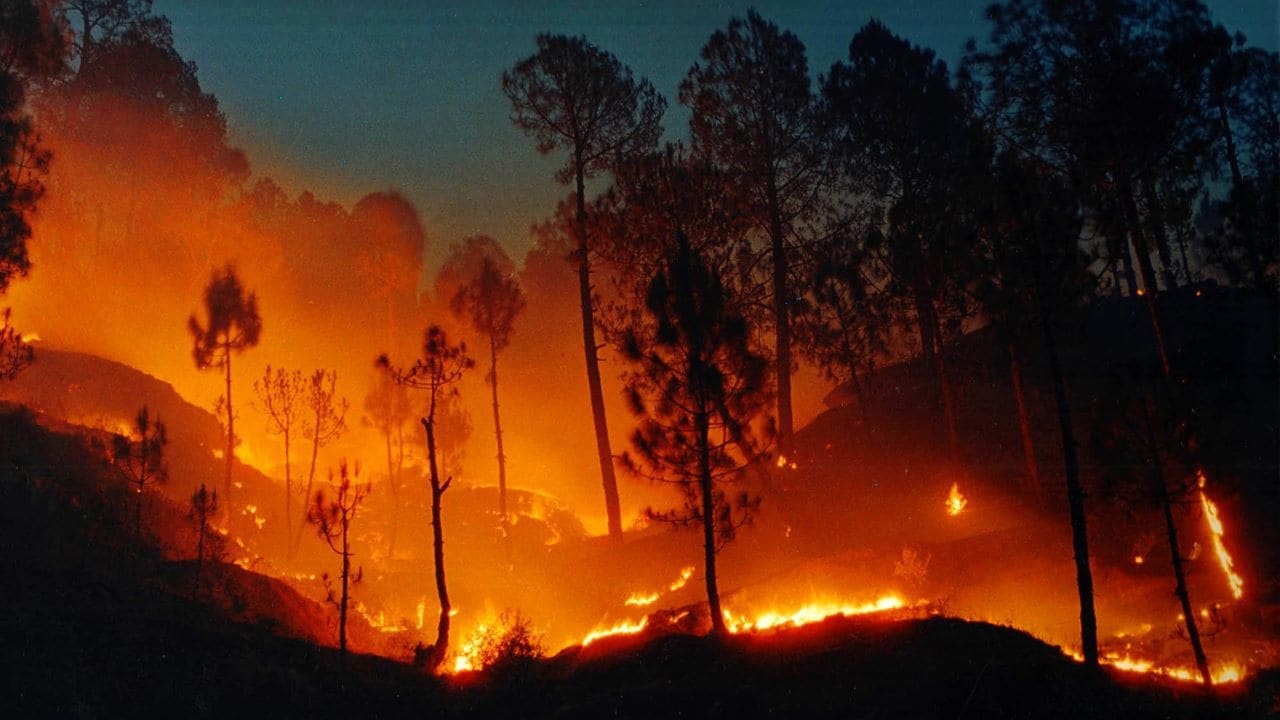Rising Flash Floods in India: Causes, Patterns, and the Way Forward
Context
India is witnessing a sharp rise in flash flood events, turning them into a recurring and deadly hazard. Recent disasters in Himachal Pradesh (July 2025), Wayanad, Kerala (July 2024), Ladakh (June 2024), and Sikkim (October 2023) underscore the increasing frequency and severity of these sudden floods. The growing impact is linked to climate change, extreme rainfall, and insufficient localized mitigation strategies.
Introduction
Flash floods are rapid-onset flooding events that occur due to intense rainfall in a short time over a small area. According to the Union Jal Shakti Ministry, the number of flash flood events in India rose from 132 in 2020 to 184 in 2022. Despite the growing threat, there remains a lack of detailed research on regional vulnerability, hampering the development of effective early warning systems and disaster preparedness mechanisms.
Findings from Recent Study on Flash Floods
-
A study by IIT Gandhinagar, published in Nature Hazards, examined flash flood drivers across Indian subcontinental river basins.
-
The study titled ‘Drivers of flash floods in the Indian sub-continental river basins’ mapped sub-basin level vulnerability using hydrological and geomorphological data.
-
Himalayas, Western Coast, and Central India were identified as high-risk regions.
-
In the Himalayas, steep terrain and elevation contribute to increased flood risk.
-
In Central India and the West Coast, high runoff speed or flashiness leads to faster water level rise.
-
The study found that nearly 75% of flash floods result from a combination of extreme rainfall and saturated soil, while only 25% are caused by rainfall alone.
-
Many previously low-risk basins are now experiencing higher rainfall, suggesting climate change is expanding flood-prone areas.
Key Drivers Behind Flash Floods in India
-
Extreme rainfall alone is responsible for only 25% of flash floods.
-
Most events occur when heavy rainfall meets already saturated soil, causing quick surface runoff.
-
Only 23% of extreme rainfall events lead to flash floods within six hours, showing that prolonged rainfall is often more dangerous.
-
Regional patterns vary:
-
Western coast and Central India: High flashiness leads to immediate flood risks.
-
Himalayan region: Rugged terrain and slope elevate vulnerability.
-
Ganga Basin: Sub-basins in the southern Himalayan stretch are more prone than those in central regions.
-
-
Terrain and local climatic factors play a larger role than rainfall intensity alone in determining flood risk.
Climate Change and Increasing Flash Floods
-
Rising global temperatures have increased atmospheric moisture capacity, leading to heavier rainfall.
-
For every 1°C rise, the atmosphere holds about 7% more moisture.
-
Between 1981 and 2020, India saw:
-
Doubling of pre-monsoon extreme rainfall
-
56% rise in monsoon rainfall
-
40% rise in post-monsoon rainfall
-
12.5% rise in winter rainfall
-
-
Over 75% of flash floods between 1980 and 2018 occurred during the monsoon season.
-
Since 1995, flash floods have increased notably in the Brahmaputra, Ganga, and Krishna basins.
-
51% of non-flood-prone sub-basins now show higher rainfall and 66.5% show increased streamflow.
-
Conversely, some traditional flood zones are seeing reduced wet hours, reflecting shifting climate patterns.
Need for Region-Specific Adaptation
-
A one-size-fits-all approach is insufficient to address flash flood risks.
-
Region-specific strategies are essential, considering topography, soil type, and hydrological behavior.
-
Early warning systems must incorporate real-time, localized data for better disaster preparedness.
-
Climate-resilient infrastructure and adaptive land-use planning are necessary to reduce long-term risks.
-
Identifying emerging hotspots and integrating them into national and local planning frameworks is vital.
Conclusion
Flash floods are becoming a widespread challenge across India, influenced by climate change, land-use changes, and inadequate preparedness. The findings of the IIT Gandhinagar study highlight the urgent need for scientific, region-specific flood management strategies. Addressing these risks requires a shift from reactive to preventive planning, supported by robust data, resilient infrastructure, and integrated policy action to safeguard lives and ecosystems.


.jpg)
.jpg)
Comments (0)